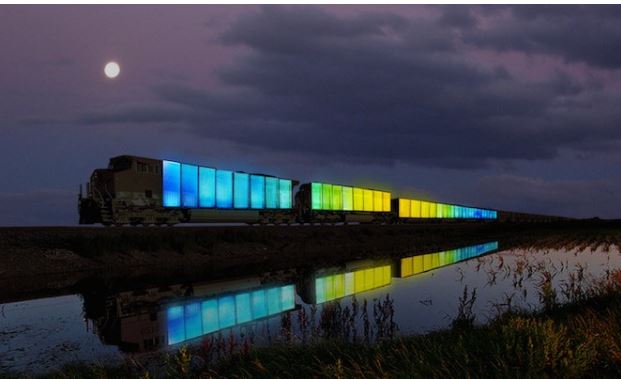- Get link
- X
- Other Apps
When Art and Technology Collide, You Get These Stunning Results by Serena Garner
Technology has always played an essential role in art. New innovations give artists the opportunity to create works that would have been impossible to make otherwise. With the evolution of mobile web app development and other digital platforms for creating and viewing art, the possibilities are seemingly endless for how art and tech will continue to intersect.
If the Digital Revolution exhibit at London’s Barbican Centre is any indication, the trend of art embracing tech continues to this day. Last summer, the exhibit showcased works of art made with digital technologies. It served to demonstrate how the latest technology can expand artists’ abilities.
The following are several key works from Digital Revolution that clearly illustrate the marriage between the digital world and the art world.
Making Art with Laser
“Assemblance” is an interactive piece that allows guests to manipulate coloured laser beams through fogs of smoke. By doing, so, they can create light structures and floor drawings.
The piece doesn’t merely show off a cool technology; it encourages guests to work together towards the goal of creating art. If you create a floor drawing on your own, it may suddenly disappear if it touches someone else’s drawing. If you hold hands with others and work together, you can create more intricate, durable designs.
Playing with Artificial Pets
Image source: http://www.stuff.co.nz/waikato-times/business/technology/9285701/A-robotic-petting-zoo
Wonder if there will ever come a day when the family pet is a robot? The “Petting Zoo” experience offers you a glimpse into that future. It features a series of tubes hanging from the ceiling, like some sort of AI snake.
Guests can interact with them as if they were real animals. Like real animals, they’re very responsive. They change colour in response to your movements, draw away shyly if too many people approach, and cuddle up next to you if you treat them affectionately.
It may seem like a novelty now, but in the future, these types of pets may be commonplace.
Let Robots Make Art
Image source: http://www.creativeapplications.net/arduino-2/rising-colorspace-drawing-robot-and-an-evolving-system-that-overwrites-itself/
“Rising Colorspace” equips a wall-climbing robot with a paint pen and a software program. As it climbs the wall, the software instructs it to paint in a certain pattern. Thus, the design itself will look different depending on when you visit the exhibit.
Unfortunately, the robot needs to take a break every couple of hours to recharge its batteries. Otherwise, it could theoretically create art forever.
Making a Point About Pollution
Artists often use their work to highlight key issues they’re passionate about. Dmitry Morozov, a Russian artist, has used technology to create a piece that accomplishes this goal, while still making something aesthetically-pleasing.
Morozov built a device which records the concentration of certain pollutants in the air. A software program translates the data into shapes and colours. The greater the amount of pollution in a given area, the more vibrant and detailed the design. Morozov prints them out, showing off the beautiful designs while also highlighting the pollution problem in a clear, visual way.
Making Stained Glass with Paper
Many artists value the process of creating their work just as much as they value the final product. Eric Standley is one such example. He creates stained glass windows that don’t actually have any glass in them at all.
Standley begins by drawing the design. Then, he uses lasers to cut out individual elements, allowing him to layer them on top of each other to create vivid, 3D rendering of the window. According to Standley, using technology in this manner helps him feel more connected to the art he creates.
The Next Step in Light Show Evolution
Light shows are nothing new, especially to anyone who has attended a music festival in the past few years.
However, the artists behind “Light Echoes” have found a way to make them more dynamic. They mounted a crane on top of a moving train and used a laser to project images onto the Southern California landscape as the train passed by. The laser left behind visual “echoes” on the tracks, which the team captured via long-exposure photography.
Understanding the Metaphorical Creative Process
“Treachery of the Sanctuary,” like many works of art before it, serves to depict the creative process. Unlike any work of art before it, the piece uses digital technology to accomplish this goal while offering guests an interactive experience.
The piece is a triptych, consisting of three screens. Stand in front of the first, and you’ll see your shadow reflected on the screen disintegrate into a flock of birds. This represents the first spark of creative inspiration.
Move over to the next screen, and you’ll see digital birds pecking away at your shadow, an expression of your first critical response to an idea.
Once you reach the third screen, your shadow grows virtual wings which flap in response to your movements. This shows what happens when the final idea is realized.
These examples represent a small sampling of what artists are now doing with digital technology. As innovators continue to develop new tools, artists will continue to implement these, resulting in works of art you could have never imagined.








Comments